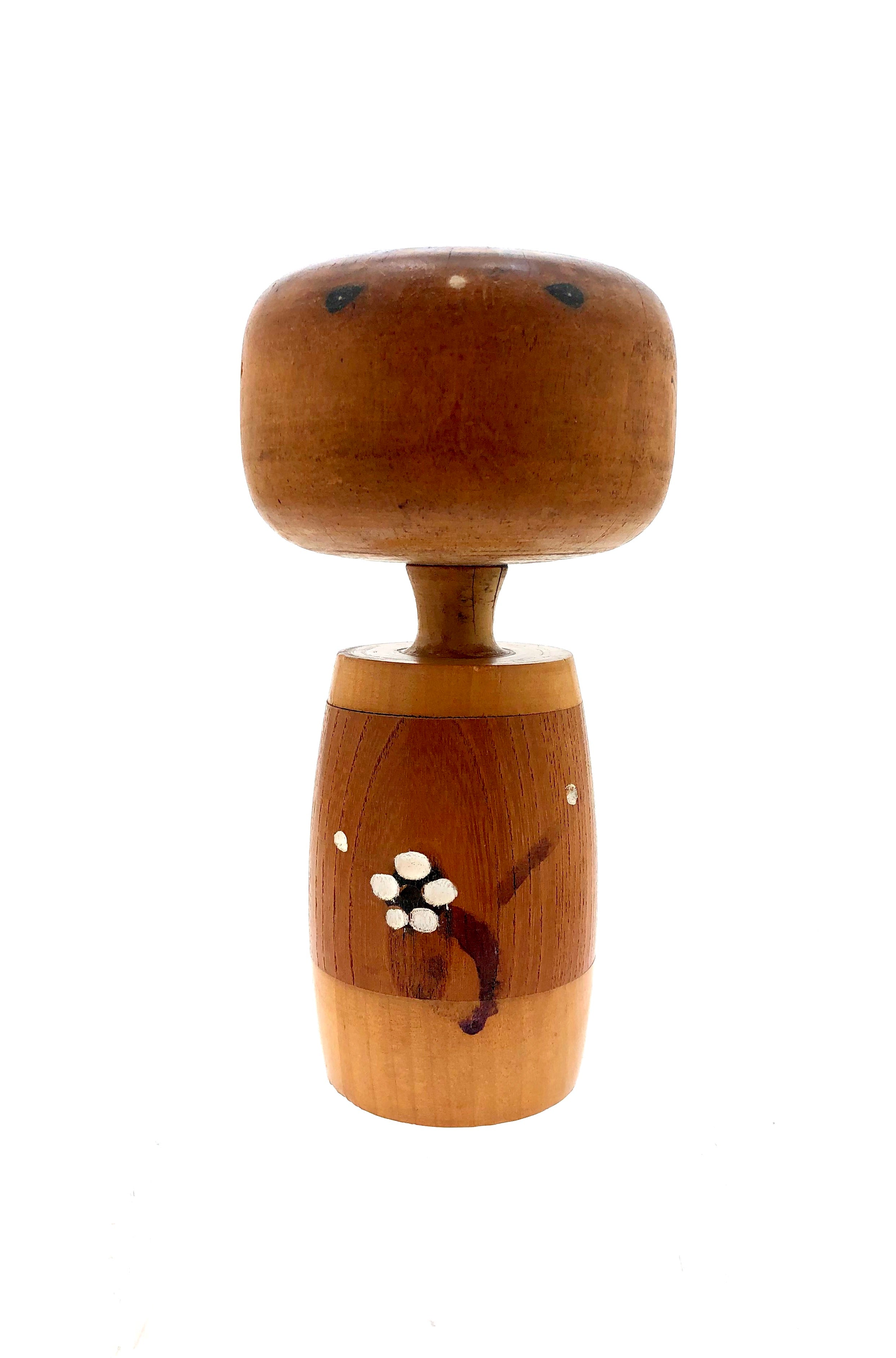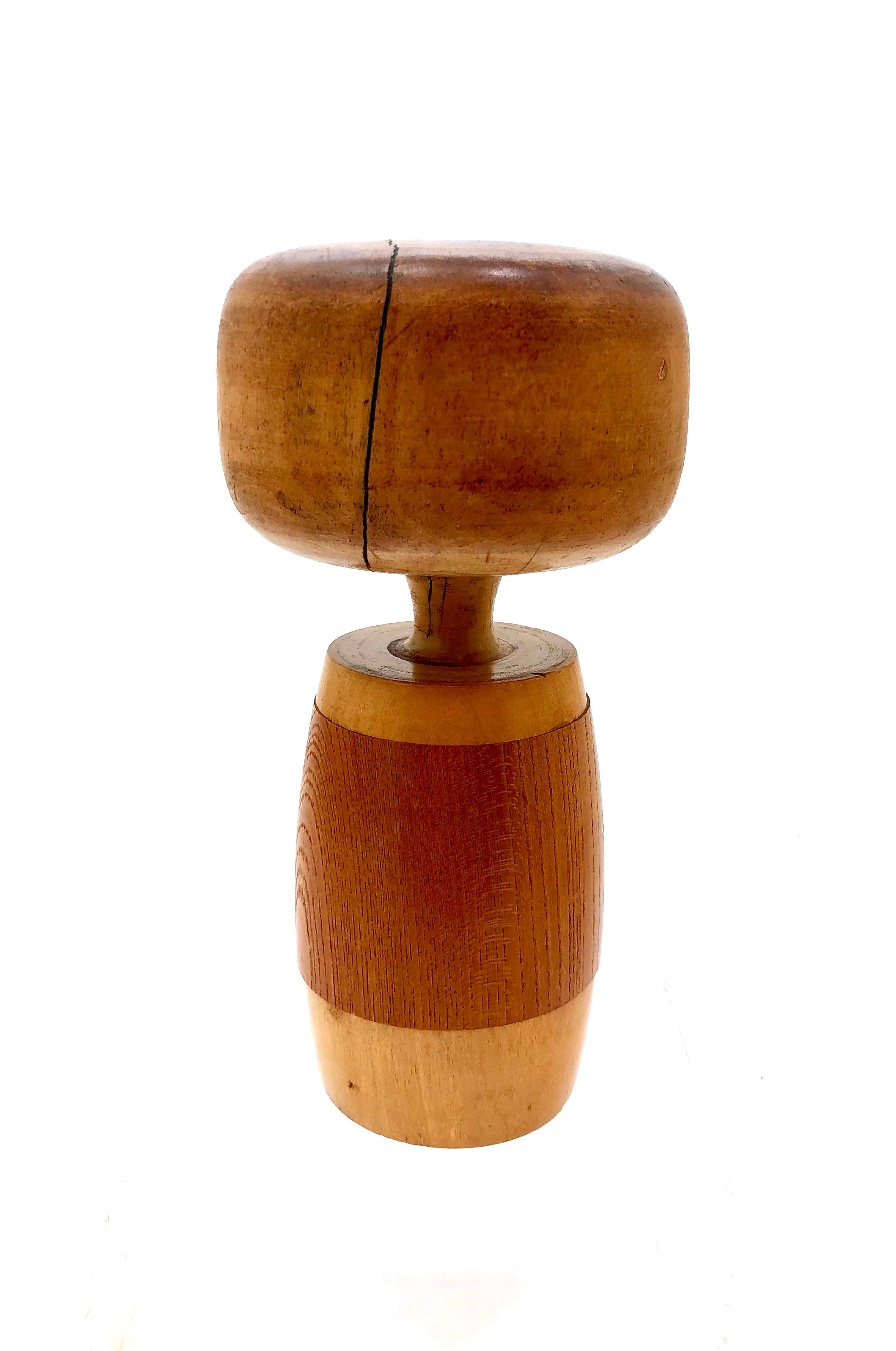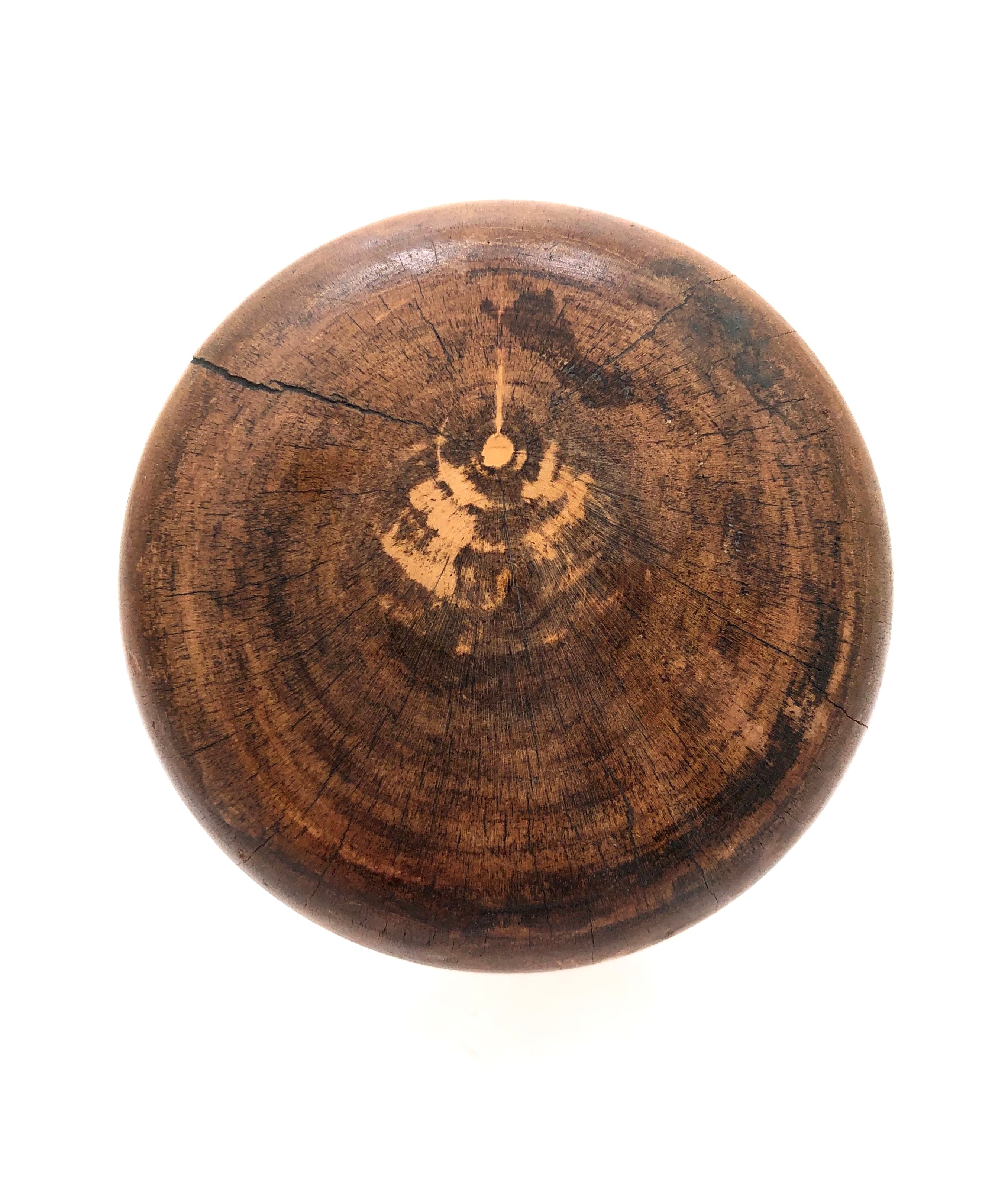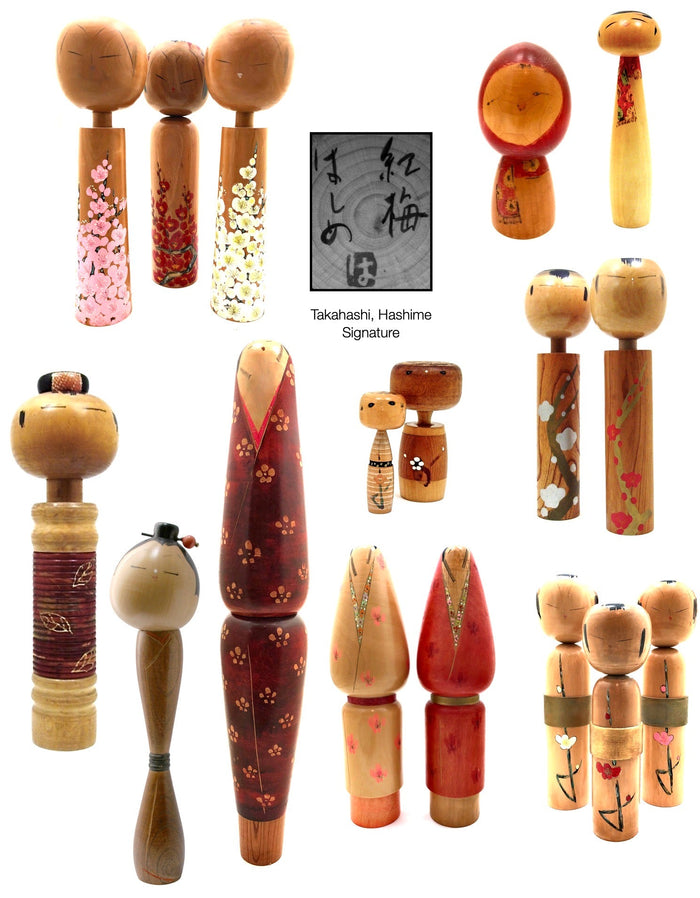


Vintage Sosaku Kokeshi Entitled: Ume.ko (Plum Maiden) by Takahashi, Hashime
Dimensions: 7-1/4”h
This is an exceptionally old doll and decorated with a white plum blossom motif on the front of the doll. His dolls also utilize multiple types of wood, with natural colors, with hand-painting to define the face and clothing.
The most unusual quality of his dolls is that its heads is a separate element, or just a simple tapered element at the top of the doll form. Takahashi-san has an unusual way to illustrate kimono by combining wood types to differentiate the kimono and undergarments, with exaggerated waists and wide obi. Signed on the bottom by Takahashi Hashime.
Condition: Unfortunately the doll is quite worn, “as is” original condition with minor cracks on the top of the head and neck that does not lose its integrity and display ability and remains to be a quite unusual design. It appears that the previous owner wanted to see that the cracks on the head and neck does not progress. The piece has not deteriorated any further since it purchase in Sendai in 1983. We never restore pieces for we feel it is best not to take away the patina or the character of older pieces that developed with age. As curators, we had to buy this piece because of its rarity and felt it needed to be published, (A Collector's Guide: Traditional and Creative Kokeshi and Toys), and find a home.
NOTE: Originally a fine arts painter, Takahashi-san, (1918-2002) is from Sendai, (where Traditional Kokeshi were born), in Miyagi Prefecture. His artistic background also includes time spent as a craftsman of Yuzen silk kimono dying. He is a multiple award winner in yearly Kokeshi competitions, receiving the Prime Minister’s Award, the highest honor bestowed on Sosaku Kokeshi artists. All of his work is easily recognized by the painterly designs decorating his dolls. Now deceased, his son, Akinori is carrying on the family’s tradition, but in limited production.

Artisan
Woodworker: Takahashi, Hashime
1918-2002
Biographical History:
Takahashi Hashime was originally a fine artist/painter. He is known for his colorful designs and the use of brush strokes. Takahashi-san is from Sendai, (where Traditional Kokeshi were born), in Miyagi Prefecture. His artistic background also includes time spent as a craftsman of Yuzen silk kimono dying which is why Kimono is a focus on all of his dolls. He is a multiple award winner in yearly Kokeshi competitions, receiving the Prime Minister’s Award, the highest honor bestowed on Sosaku Kokeshi artists. All of his work is easily recognized producing unique forms and details. Now deceased, his son, Akinori is carrying on the family’s tradition, but in limited production.
Collector's note – descriptive qualities, standard characteristics & ornamentation styles:
The most unusual quality of his dolls is that their heads are treated as a separate element which in many cases are a simple tapered element between the head and the body of the doll. The artist motif‘s range from realistic seasonal flowers such as abstract Plum flowers, (Ume), Cherry blossoms, (Sakura), and Japanese Iris, (Ayame), or celebrating zodiac figures representing one of twelve specific constellations of the zodiac, which over time took on diverse meanings. Takahashi-san has a beautiful pictorial approach to illustrating kimono in a very refined painterly way. He shows both painted and carved Kimono, Obi with exaggerated waists and supportive under and over garments such as scarves and sashes. His use of Rokuro Moyo is occasionally seen in carved and painted forms. Last but not least, are the detailing of faces, all having expressive eyes, small dot noses and wisps of hair. His use of Rokuro Moyo is occasionally seen in both carved and painted forms.
Explore & Learn More about Woodworker: Takahashi, Hashime